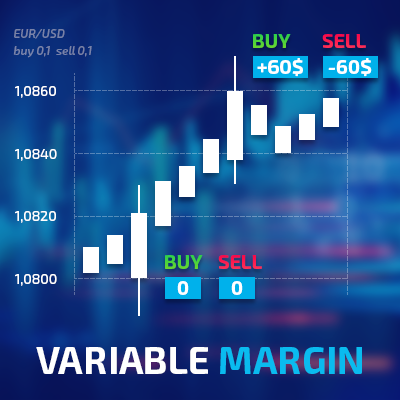
One of the key concepts in trading, including on Forex, is margin. One of its important varieties is variation margin, a concept that every trader needs to know. We talk about the variation margin and its features.

One of the key concepts in trading, including on Forex, is margin. One of its important varieties is variation margin, a concept that every trader needs to know. We talk about the variation margin and its features.
Variation margin - the amount that a trader receives from any change in the value of futures on the exchange.
Depending on whether this change is positive (that is, the trader makes a profit) or negative (on the contrary, the trader suffers a loss), the amount is either credited to the trader in the account or debited from it by the clearing company.
Variation margin is often used in exchange areas, where trader's forecasts regarding trading results are of great importance. As a result, money passing between the accounts of traders concluding a futures contract are the essence of the variation margin. Since the calculation begins to occur literally from the first moment after the opening of a trading position, it is obvious that the price volatility of a position can be unpredictable. This implies many options for margin, which is why it is called variation margin. It can also be said that the variation margin is the monetary equivalent of the result of a transaction within one trading session.
Margin calculation occurs for the following cases:
There is a simple formula for calculating the variation margin:
VM = (CT - CPU) x n
CT - the price of a futures contract at the time of settlement.
Cp - the price of the futures contract at the time of the previous clearing.
n - futures contracts.
It is important to understand that a lot depends on the period during which a trader holds a position. If a trader holds a position for only one session, the variation margin will almost certainly coincide with the final result. If the position is long-term and held for several sessions, then given that the variation is calculated daily, the result will differ. It depends on the trader’s ability to predict the volatility of bidding and the results, whether it ends with a profit in the account or a loss.
There is a big difference between the stock market and the futures market. With stocks, the logic is quite simple: after the sale of an asset, money is simply deposited into the account of the trader. With futures contracts, it is more difficult, because profit is calculated daily and depends on the trader’s forecasts
For example, if a trader buys futures on the shares of a company that costs a certain amount of money, then if the futures cost increases at the end of the day, the trader will receive a profit in the form of a price difference. He does not need to sell futures in order to receive money. Of course, if the price of futures falls, then an amount equal to the difference in prices will be debited from the account of the trader.
Pros and Cons:
Pros:
Making profits without selling futures by keeping a deal open for a long period of time to make a profit.
Savings, since commissions on futures transactions are lower than on transactions with stocks.
You can use a higher leverage.
Cons:
If the price fluctuation does not go in the direction predicted by the trader, he may trade at a loss, part of the money will be debited from his account daily until the price volatility changes or the money finishes in the trader's account. In the stock market, such a situation is impossible, because there is direct trading in securities.
Any futures contract has a validity period. Upon its expiration, it will be impossible to complete transactions with a specific asset. To resume trading, you need to sell contracts (inactive one’s are transformed into the underlying asset) and acquire new ones. It costs some money. It does not matter much if the trader is aimed at short-term transactions, but for long-term ones, it is necessary to take into account possible losses.